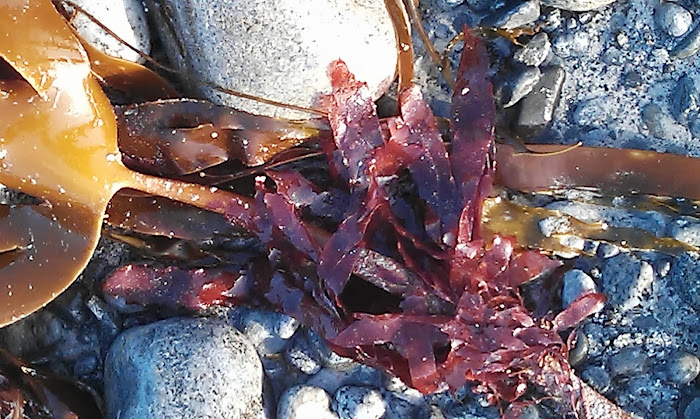Researching a book on
British seaweed may have steered me away from sushi but I am easily distracted. I couldn’t resist further nosing into: why Koreans serve brown seaweed soup to celebrate a birthday. Postpartum mamas are also served copious amounts of seaweed soup, whilst in confinement. Perhaps the iodine is thought to help lactating mothers or
seaweed has properties attributed to regaining a pre pregnancy figure. Scientists
would however appear to be anxious over levels of iodine consumption but as is often the case, scientific data is
inconclusive, not least because the iodine content in soup (from the seaweed) varies. While I've noticed
seasonal culinary differences when cooking with marine algae I suspect
there is a variation in nutrients too. I’m left wondering whether the iodine content is
higher in the birthday soups of summer babes.
Here is a link for Korean
miyyeoguk (seaweed soup) if you
like the idea of making it. There is plenty of giggling chat
beyond the soup for those who, like me, are keen to be sidetracked. Stick with the
video for a creative kelp facial mask - it wouldn’t look out of place at
Hallowe'en. Now there’s wicked kelp thought. Sadly at room temperature it’s
greenish brown not black in colour.
I’ve used dulse in
soup recipes in The Forager’s Kitchen: it thickens and is of course rather
magical when cooked because it changes colour from ruby port red to green. This
week however, I’ve created a new recipe for my seaweed book, which is loyal to the delicious, simple flavour of dulse.
Increasingly, I realise that we need to be more discerning
when cooking with Marine algae. Species is important and seasonal taste may vary.






